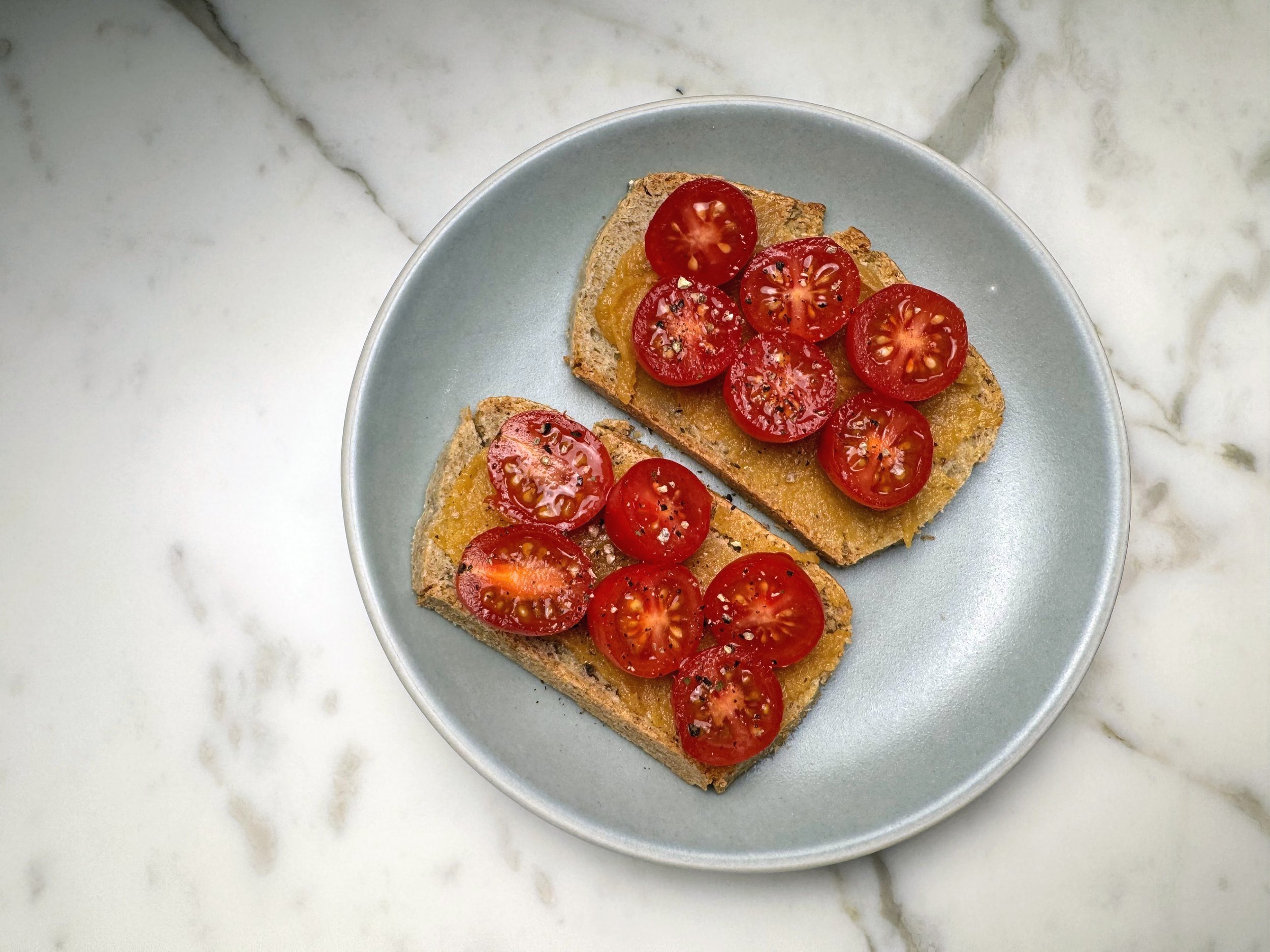Are You Eating Miso?
Recently I decided to do something about the lonely container of miso paste sitting at the back of my fridge.
What is miso?
Miso is a traditional fermented food. Miso is produced by fermenting soybeans with salt and koji (a fungus) and sometimes rice, barley, seaweed, or other ingredients.
Miso has expanded beyond soybeans. Chickpea miso is one of the more common varieties.
History
Miso originated in China in during the third century BC
Miso was introduced to Japan at the same time as Buddhism in the sixth century AD
Miso played an important nutritional role in feudal Japan
Vegan miso soup
Benefits of Miso
🌱 “Fermented foods provide many health benefits such as antioxidant, anti-microbial, anti-fungal, anti-inflammatory, anti-diabetic, and anti-atherosclerotic.” [source]
🌱 “Miso possesses anticancer, antihypertensive, antiobese, and anti‐inflammatory properties, as well as the ability to eliminate gastrointestinal diseases.” [source]
Miso paste on sourdough bread with tomatoes
Benefits of Fermentation
🌱 Fermentation produces microbes
Microbes are tiny living things that are found all around us. Microbes play a role in changing the nutritional quality of foods in a variety of ways, particularly those involved in processes such as fermentation.
🌱 Fermented foods contain probiotics [source]
Probiotics are one type of functional food that contain bacteria that have been determined to be beneficial to one's health.
🌱 Miso is a functional food [source]
Functional foods are described as foods that are similar in appearance to regular foods but provide health benefits and/or reduce the risk of chronic illness beyond the fundamental nutrients that food delivers. [source]
Miso paste on celery
Ready to add miso to your diet?
🌱 Make miso soup.
Many of us are already familiar with miso soup. It comes together quickly at home. Adding seaweed and other veggies boost the nutrient content even further. Link to recipes
If you’re plant-based, most restaurant miso soup contains dashi, made from fish. It does not hurt to ask, the restaurant may have vegan miso soup. If you’re not plant-based, add miso soup to your order any time it’s available.
🌱 Add to avocado toast.
Spread miso on the bread first, then add avocado.
🌱 Add to a slice of healthy bread.
Try miso instead of nut butters on bread. Add tomatoes and/or sprouts.
🌱 Serve with raw veggies.
Try miso on raw veggies such as celery or cucumbers.
A note on sodium
Miso contains sodium. If you are concerned about sodium and blood pressure, speak with your doctor. Note this paper, which found that miso soup consumption might decrease heart rate, but did not have a significant effect on the blood pressure of middle-aged and elderly Japanese individuals.
If your diet is already high in sodium from restaurant, packaged and processed foods, consider reducing consumption of those foods.
As with most things, I don’t recommend going overboard. Sometimes more is better. Often times it’s not. Stick to a serving of miso a day.
Miso paste on cucumber slices
Tips
🌱 I look for unpasteurized miso. Some vitamins are heat sensitive and their nutritional value may be reduced during the pasteurization process. Do what feels best for you.
🌱 Always check the list of ingredients on the food label.
Pacha buckwheat bread with miso and tomatoes
Nutrition Facts
1 tablespoon of Miso Master organic mellow white miso contains:
1.5 grams of fiber
1.5 grams of protein
source: Cronometer
Where to Find Miso
Look for miso in the cold section of your local grocery store, near the sauerkraut, tofu and tempeh.
Interesting Producers
South River Miso is a family-owned, small batch producer in Massachusetts that’s been making miso since 1979! It’s worth checking out, if you happen to see it stocked in your area.
Ingredient list for South River Miso’s dandelion leek miso:
Deep well water, organic soybeans, organic brown rice, sun-dried sea salt, organic dandelion greens, organic garlic, wild leeks*, organic nettle greens, organic sea vegetables, and koji culture. *wild crafted.
Is miso a staple at your house? If so, how do you serve it? Let me know in the comments below!
Thanks for reading!
Want more content like this?
Subscribe to have the blog post delivered straight to your inbox weekly.
Disclaimer
Please note that some of the links on this website are affiliate links, and at no additional cost to you, I may earn a commission if you decide to make a purchase after clicking through the link. Unless I’ve noted otherwise, all links are to products I use and love.
Your support in purchasing through these links enables me to keep the content free for everyone. Thank you for your support!





